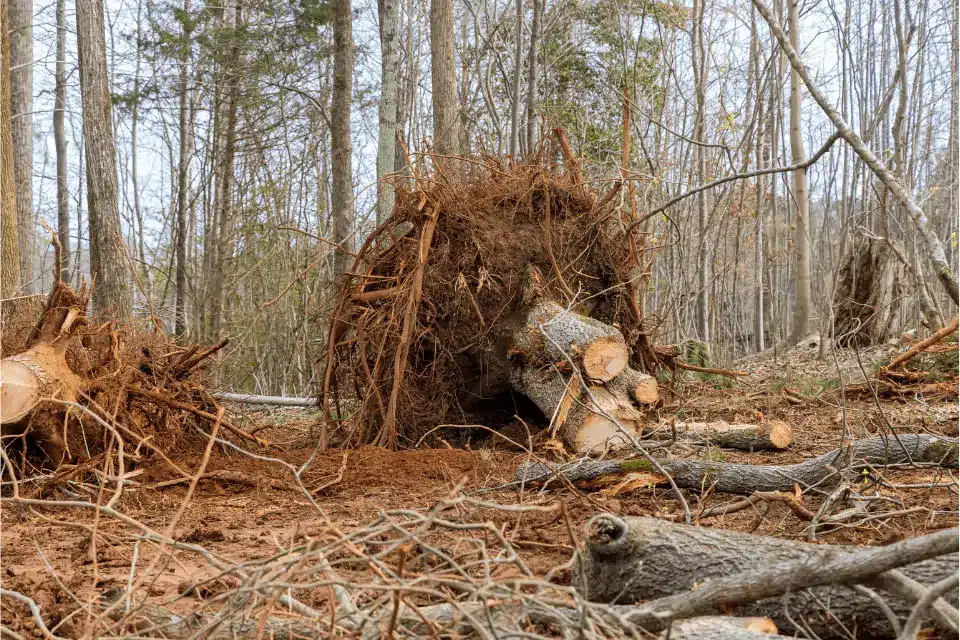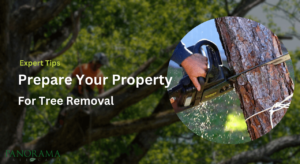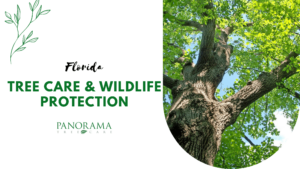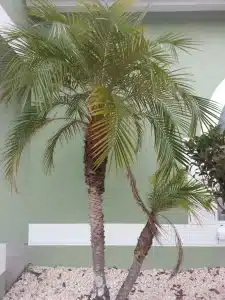Trees provide a myriad of benefits to our lawns and landscapes. However, there comes a time when tree removal is inevitable, especially when they pose a hazard to life and property.
Unfortunately, tree removal often leaves a mess behind, damaging the once-beautiful lawn and making it appear uneven and unsightly. This is why landscaping after tree service or any other places is crucial, irrespective of the size of your property.
With sufficient knowledge, a bit of effort, and some creative ideas, damaged lawns can be repaired and restored to their former glory. Let’s explore how to repair lawns after tree removal and boost the curb appeal of your property.
Steps to Repair a Lawn After Tree Removal
Level the Ground
The first step is understanding how to level the ground after tree removal. You can level the ground by using a shovel or a rake. The goal is to ensure that the area is flat and free of any bumps or hollows. It can cause water build-up if uneven, leading to further lawn damage.
So it only makes sense to flatten the surface, especially if monsoon season is around the corner or if you live somewhere where heavy rains are a common weather phenomenon. Skipping through those puddles of water and mud isn’t a pleasant experience, so get it fixed quickly.444
For larger areas, you may require a tractor or a bulldozer. In this case, it’s best to consider hiring professional tree trimming services to ensure the job is done efficiently and safely.
Add Topsoil
During tree removal, the soil is often compacted, and the topsoil layer can be destroyed. This soil is packed with nutrients and microorganisms that are essential for plant growth.
You’ll need to add topsoil to help replenish these nutrients. Spread topsoil around the top of the hole or damaged area and work it into the surrounding soil to help create a smooth transition.
For a truly seamless recovery, consider working with a post-removal landscaping tree service like Panorama Tree Care. We specialize in repairing damaged landscapes after tree removal to ensure your property looks better than ever.
Reseed or Lay Sod
The next step is to add grass seed or sod. Reseeding is a suitable option for small damaged areas. Ensure you select the appropriate grass seed matching the existing grass and soil type. For larger areas, laying sod is the best option.
This method helps set up a lawn in a jiffy and eliminates the waiting period before the grass establishes a root system. If you are wondering how to repair lawn after tree removal, then do give this method a try.
Water & Fertilizer
After reseeding or laying sod, dampening the soil is essential to ensure the seeds or sod remain moist. You should water daily to prevent the soil from drying out. Once the grass begins to grow, you can gradually reduce the frequency to prevent overwatering.
Also, fertilize the lawn to provide the nutrients necessary for healthy growth. A soil test can help you determine the right type and amount of fertilizer to use.
Tend to the Edges
The edges of the damaged area may appear rough and uneven. You can use landscape edging to create a neat and attractive border. There are various types of edging materials, such as stone, brick, or plastic that can be used to create a barrier between the lawn and garden beds.
Tree removal or anywhere else can be a more complicated process than merely cutting down a tree. It leaves behind broken branches, debris, woodchips, and a damaged landscape. However, repairing your lawn after tree removal is relatively easy with the proper knowledge and tools.
Regardless of the severity of the damage, by leveling the ground, adding topsoil, reseeding or laying sod, adding water and fertilizer, and tending to the edges, your lawn can be restored to its former glory in no time. Landscaping after tree removal is a necessity and an investment you will never regret.
Whether you’re removing a tree for safety or aesthetics, our tree removal and post-landscaping services ensure your yard is clean, level, and beautifully restored—without the hassle.
Don’t let tree removal leave your lawn in ruins. Contact Panorama Tree Care today to schedule a consultation and let our certified arborists restore your outdoor space with expert care.







